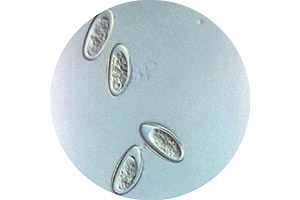Renal disorders
Among the most common pathologies that affect the main organs of the urinary apparatus we find:
– Pyelonephritis: it is a bacterial infection that affects both the kidneys and the ureters. Generally, it begins in the bladder and ascends to the rest of the organs due to the backflow of urine (vesical-ureteral reflux).It causes an inflammation of the affected areas, especially the renal pelvis.
– Glomerulonephritis: it is caused by a streptococcic infection and directly affects the glomeruli and their functioning. Due to this, these renal structures swell, diminishing their capacity to filter urine. Among its symptoms we point out the foamy appearance of urine, hematuria (presence of blood in urine) and morning inflammation of the face, hands, feet and abdomen. If it is not treated in time it usually turns into an acute renal insufficiency.
– Diabetic neprropathy: it is a typical complication of diabetes mellitus, in which renal damage is produced. It affects the smaller blood vessels of the kidneys. In the same way, it incides in the appearance of the glomeruli as they are engorged and destroyed in time. It usually sets off a chronic renal insufficiency or renal failure. One the most noticeable indicators of this disease is a greater presence of proteins in urine (which accumulate in an abnormal way).
– Renal lithiasis: also known as urolithiasis or nephrolithiasis, it is the presence of calculi or stones inside the kidneys, which can move around the different urinary ducts. These stones are made up of substances that are normally found in urine (calcium, fosfates or urates), which concentrate and solidify in an abnormal way, until the form different sized stones.
– Polycystic kidney: hereditary disorder that is characterized by the presence of multiple cysts in the kidney. They are usually of different shape, with an appearance similar to a bunch of grapes; they increase the size od the kidney little by little and alter its functioning.This disease has a high mortality rate during the first year of life.
Vesical diseases
Although this series of disorders mainly affect the bladder, they can also unleash disorders in the functioning of surrounding structures like the ureters and urethra. Among them we highlight:
– Urinary incontinence: it is the loss of control that we voluntarily exert during micturition. It happens when the muscles of the pelvis, which help in the evacuation of urine, weaken.
There are different degrees of incontinence, from the ones produced by specific situations (effort, coughing, laughter), letting a small amount of urine seep out, to the ones that are related to total loss of urinary control (in people with paralysis or the elderly).
– Vesical stones: it is the crystallization of some compound of the urine within the urinary bladder. They can also be stones formed in the renal pelvis that travel to this cavity and settle in it. They cause irritation and obstruct the passage of urine towards the urethra, as well as hematuria and dysuria (painful micturition). It mainly affects adult men.
– Cystitis: it is one of the most common alterations of the urinary tract. It corresponds to the infection and inflammation of the urrethra and bladder, caused by the action of pathogen organisms. In most cases, it is caused by the Escherichia coli bacteria, but is also originated by the action of bacteria of the Klebsiella, Proteus and Pseudomonas genders, among others.
It is characterized by a painful micturition, frequent need to go to the bathroom and alteration of the normal appearance of urine. Generally, it affects a greater number of women than men because women’s urethral duct is shorter and in more direct contact with the anus and exterior.
Anorectal afflictions
Next, we highlight the most characteristic disorders that affect the last portion of the digestive tube, directly involved in the elimination of feces.
– Hemorrhoids: they are dilated veins (similar to varicose veins in the legs), located in the anus or its surroundings. If they are veins of the superior plexus they are dubbed internal (covered by mucosa), while the ones from the inferior plexus are known as external (covered by the skin present beneath the anorectal junction). It is characterized for presenting a slight bleeding and causing pain when defecating. One of the main causes is constipation, the exaggerated effort performed when eliminating feces.
– Anal fissure: thus are dubbed the cracks (tears or ulcerations) that settle in the mucosa of the anus. They are usually painful (the pains are accentuated during defecation) and difficult to scar; they are associated to constipation and infections of the anal mucosa.
– Colon cancer: it is an abnormal proliferation of the cells that make it up. Many times, this type of cancer comes about from certain polyps lodged in the internal wall of the intestine. When it also affects the portion of the rectum, it is called colorectal cancer.In our country, it is among the five types of cancer that most affect the population. One of the most accurate exams to diagnose it is the colonoscopy.








 Muere Evita
Muere Evita